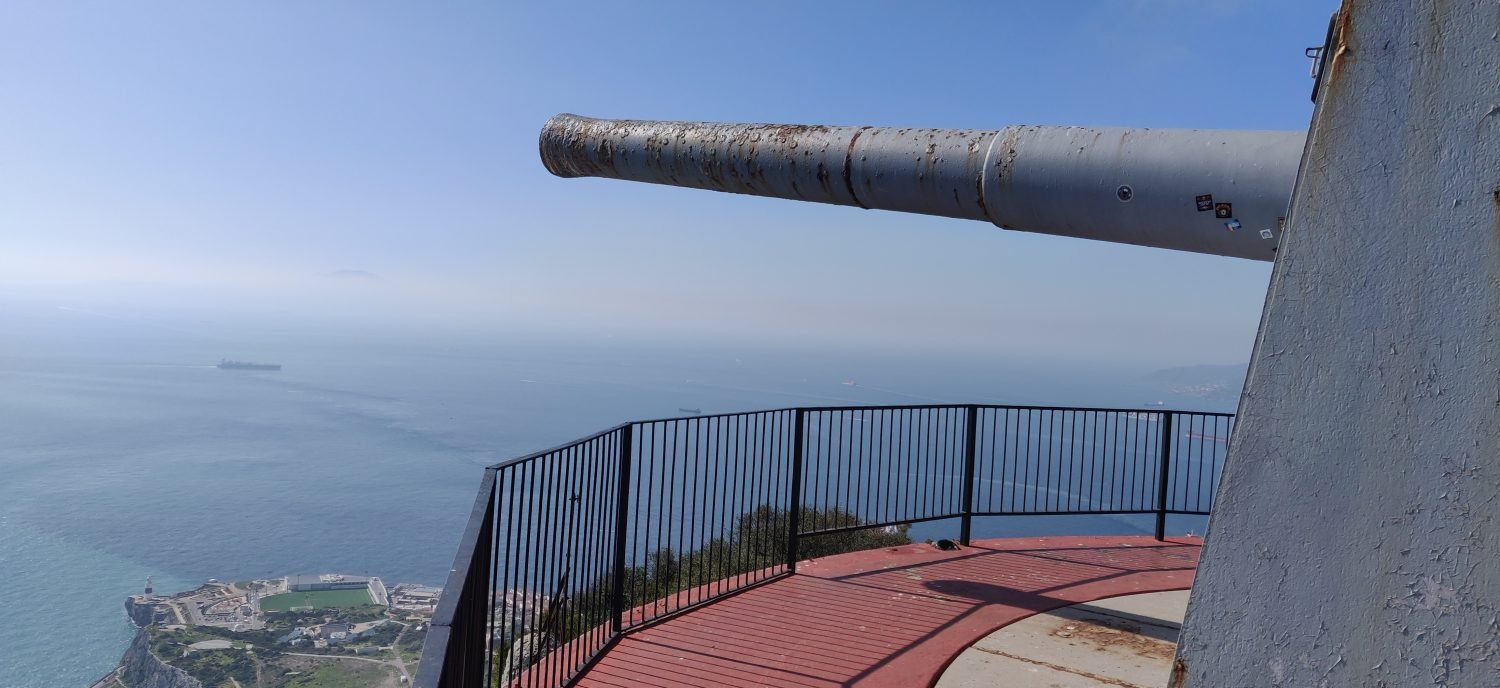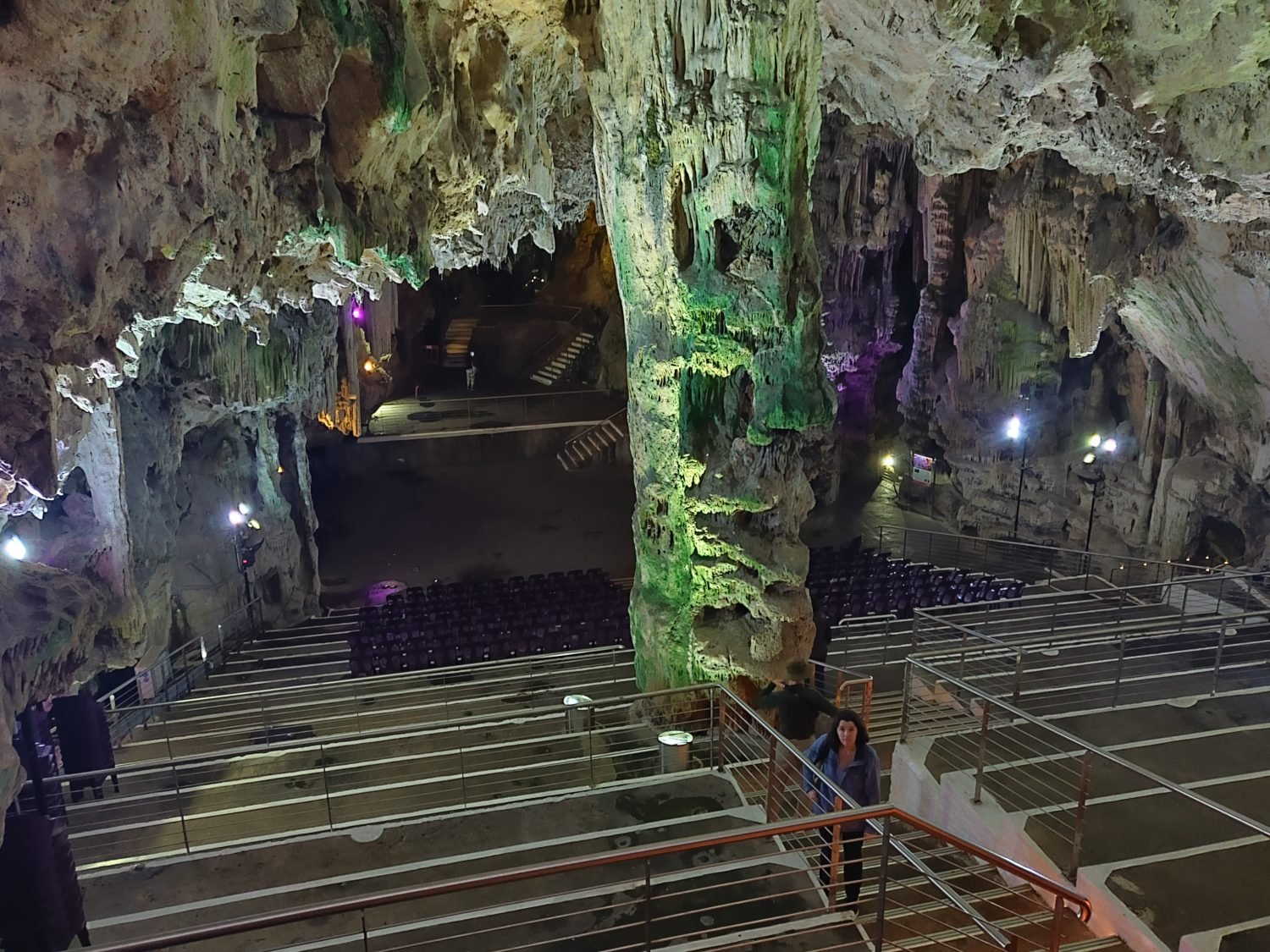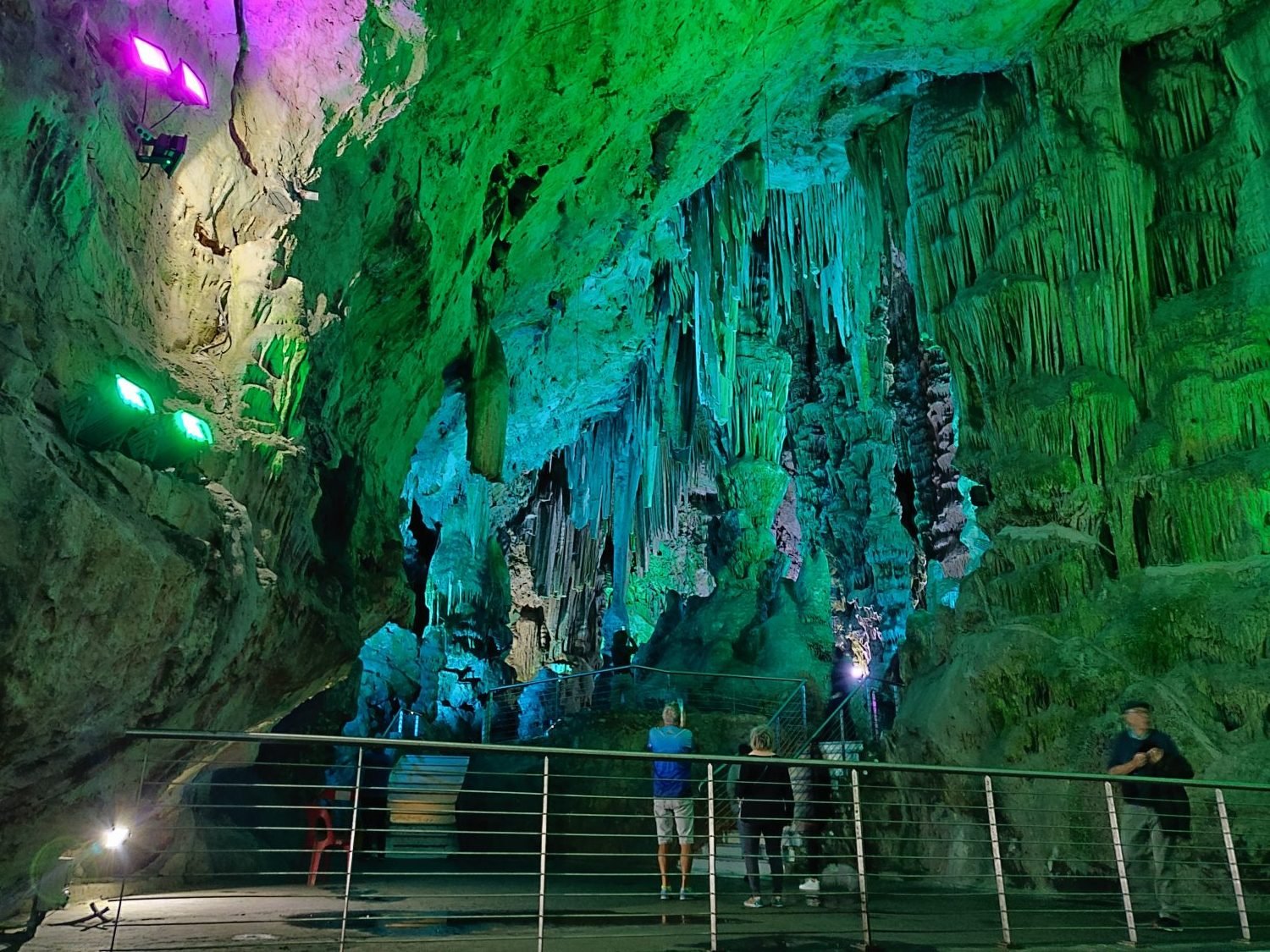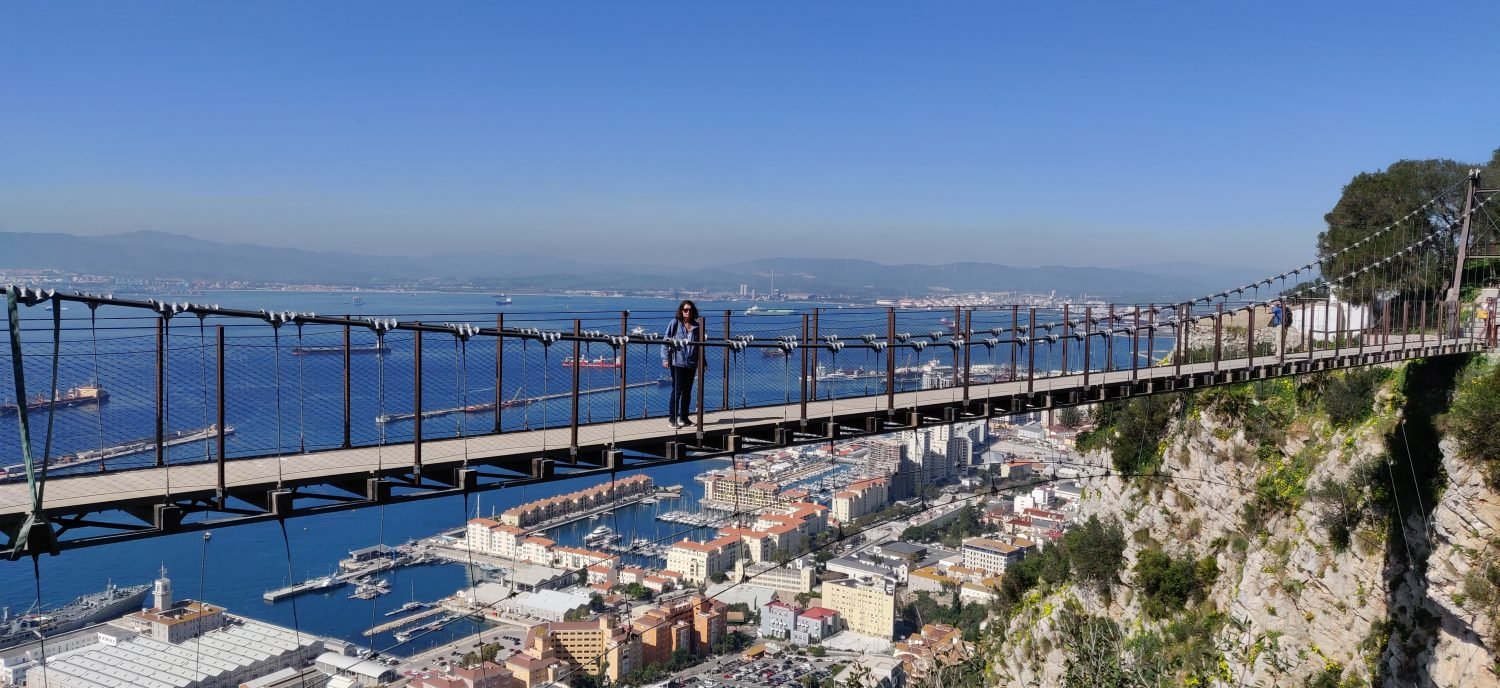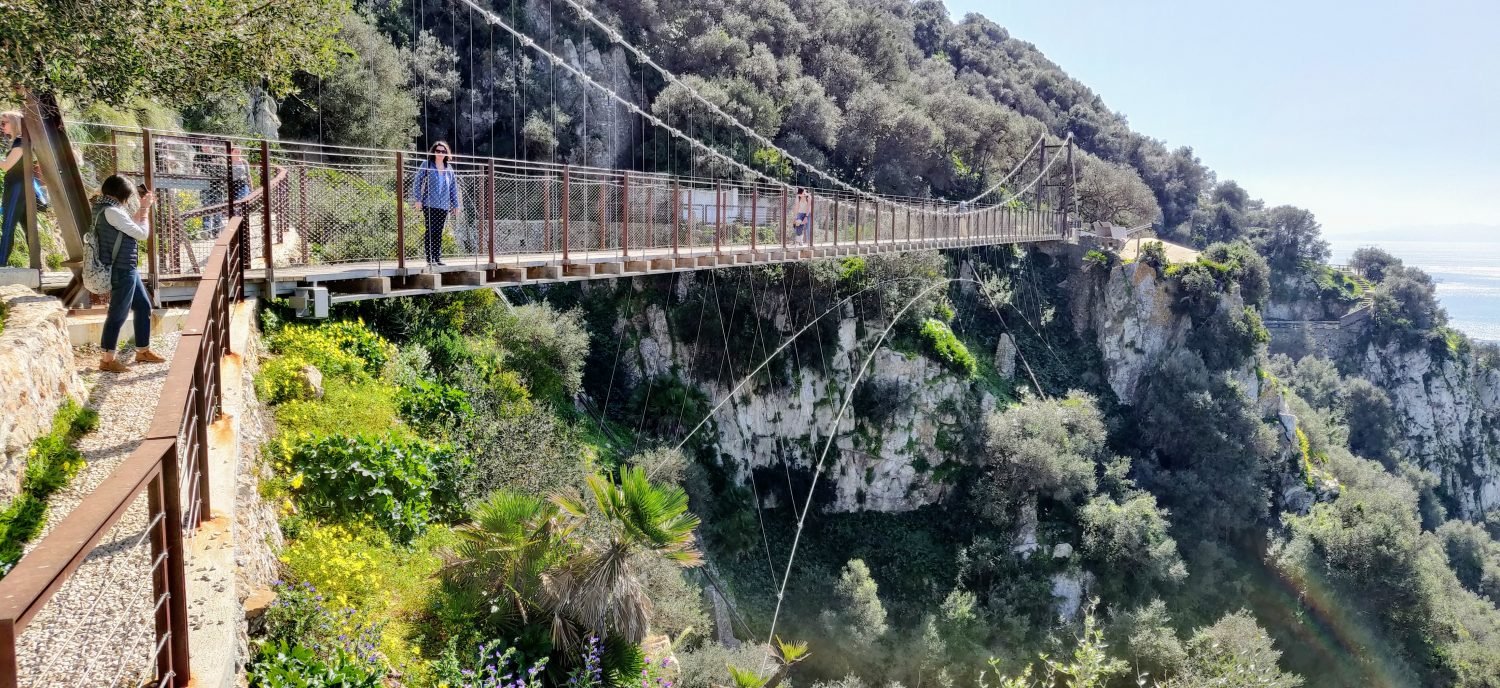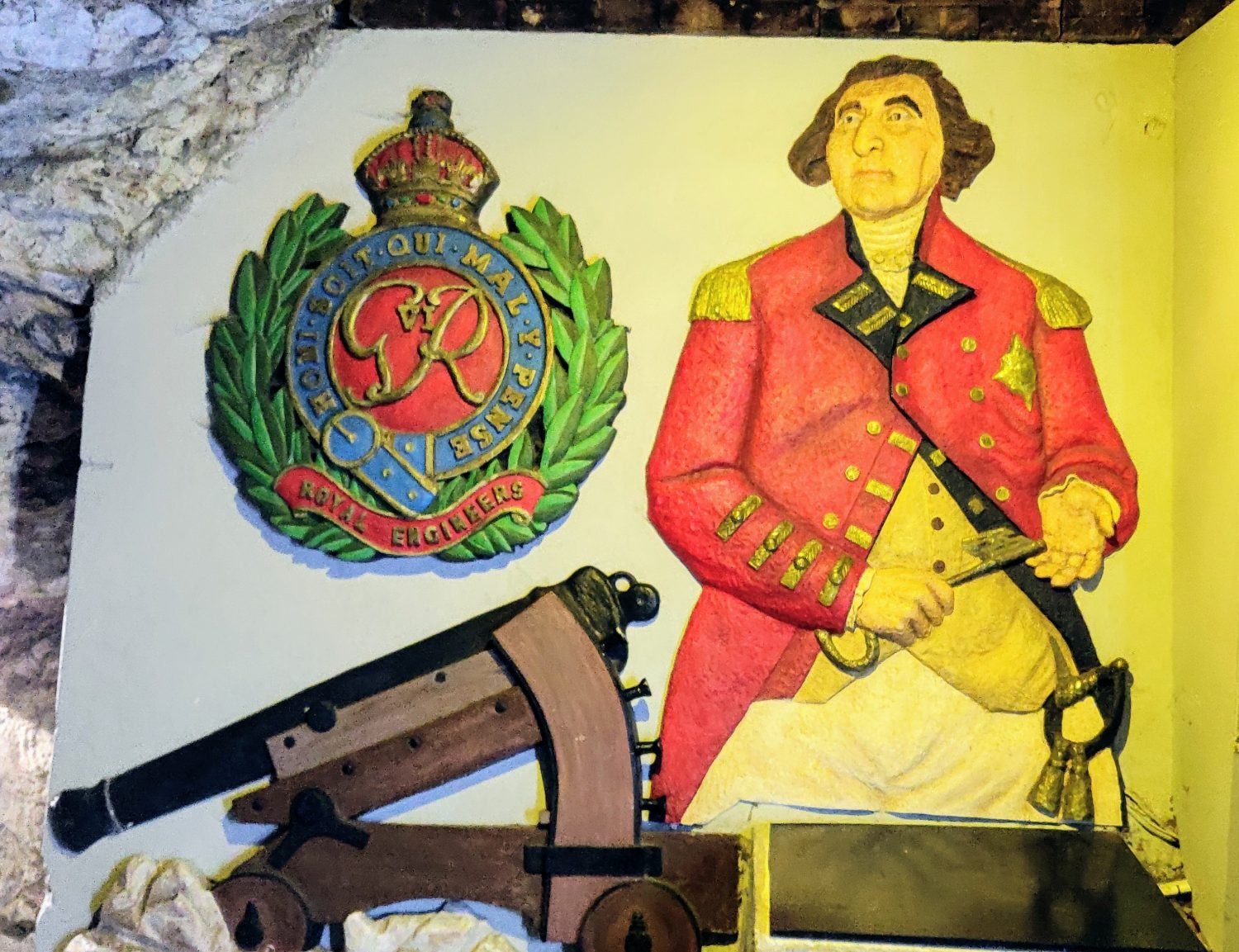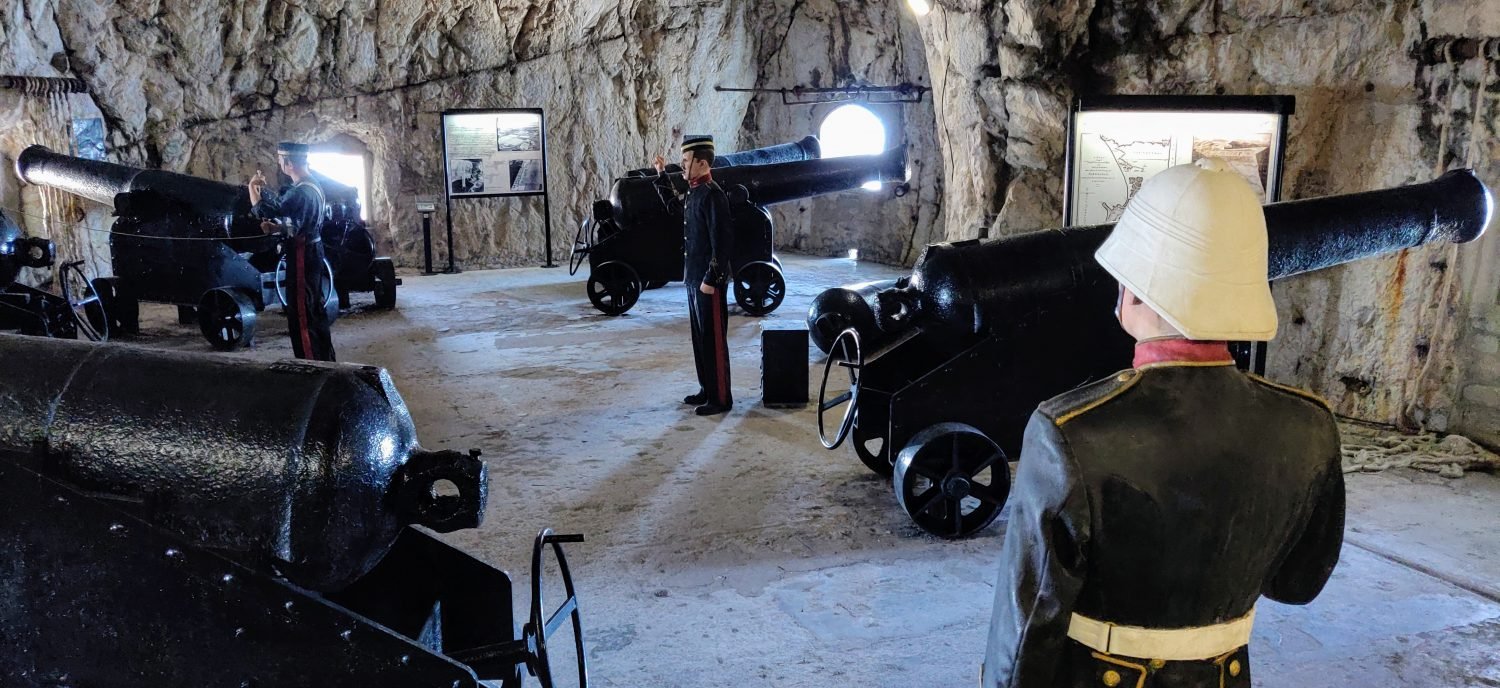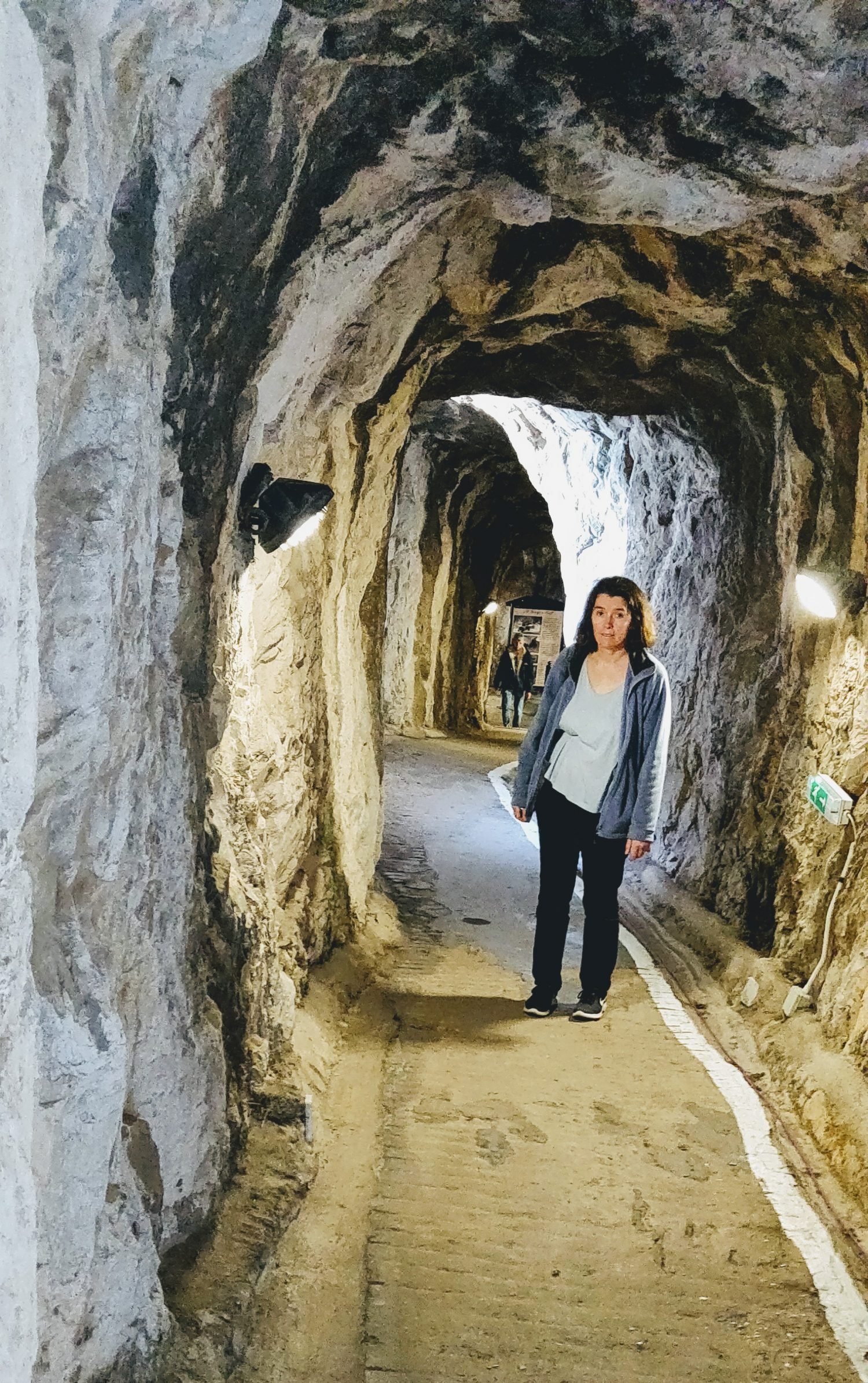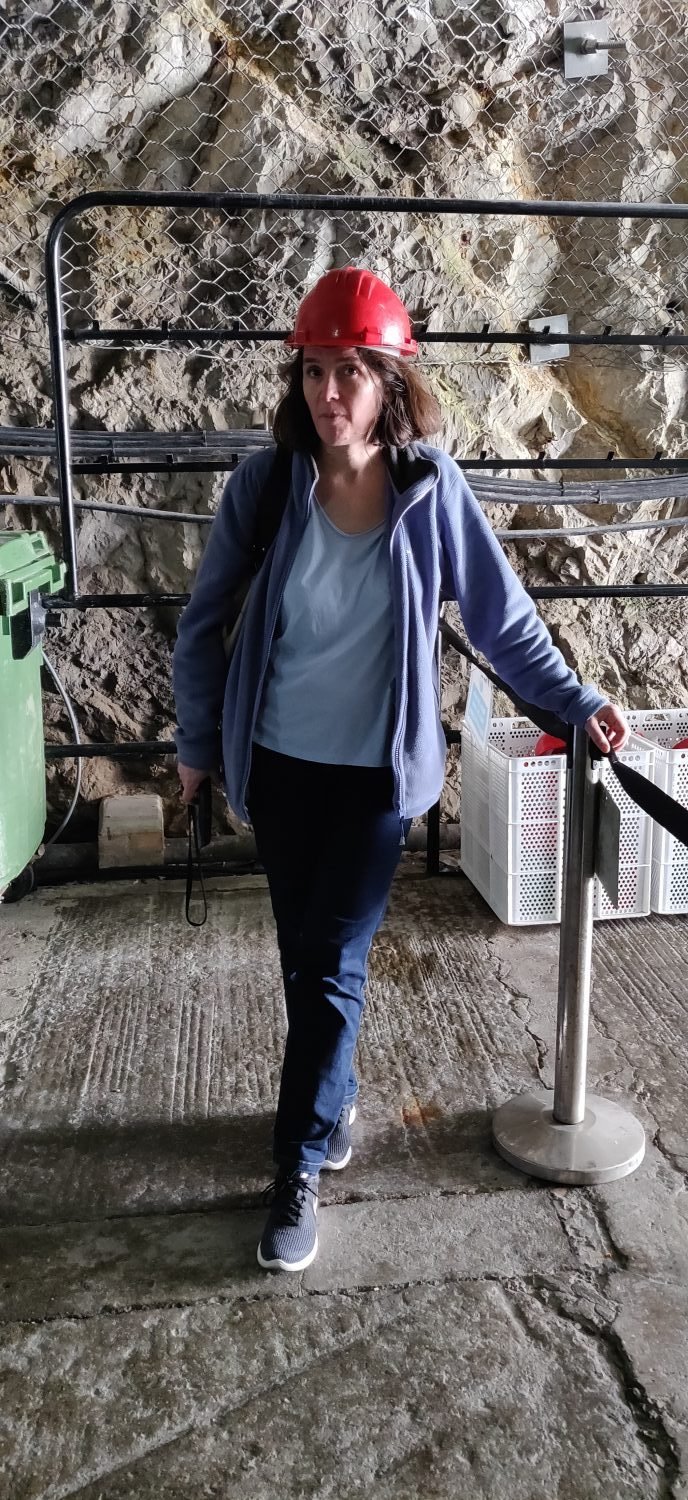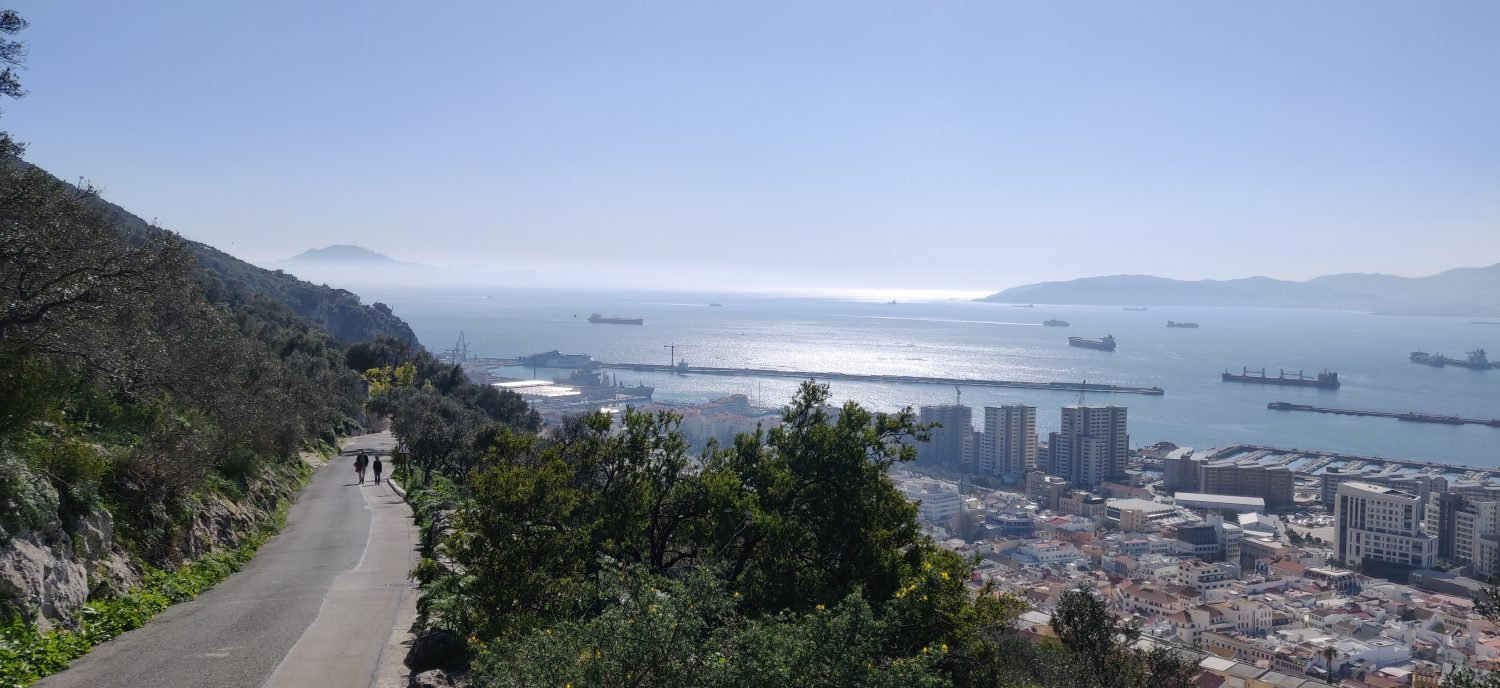Knowing the wind would be more of a gentle breeze today, we decided to explore the upper rock. After popping into Morrisons to grab a ready-made baguette for our lunch we headed to the cable car. The cable car provided some excellent views of the peninsular as it ascended 1350ft (412m) to the top station in six minutes.
The paths along the upper rock weren’t very flat, despite the fact we never walked along the ridge and we found ourselves walking up and down some large slopes to visit each of the things we wanted to see.
(zoom pic to see Europa Lighthouse we mentioned in yesterday’s post)
The monkeys left us alone while we were near their den and where most people were taking pictures of them. While we were at O’Hara’s Battery (two massive WWII guns), a monkey tried to raid some bags left on a bench by people taking pictures of the view. Having spotted nobody was watching the bags it stalked across and pounced. Well away from where we thought there were any monkeys Liz took a snack out of her pocket. Immediately a monkey dropped out of the trees and grabbed her pocket making her squeal. (The zip pockets on her fleece don’t zip up.) Not wanting to be bitten, I didn’t want to kick the monkey off her and ended up in a mini tug of war with it. As I lifted the fleece out of reach, the monkey hung on and was surprisingly heavy.
St Michale’s cave was impressive and is used today as a concert venue. It was previously a hospital.
Liz walked across the skywalk, a viewing platform with a glass floor; retreating quickly when she spotted the coned off section where the floor has cracked through.
She continued her campaign of bravery on the suspension bridge which spans a gorge deeper than The Shard (in London) is high.
After lunch, we plodded up hill, down and back up again to reach the Great Seige tunnels.
During King George sixth’s reign, the Spanish and French held Gibraltar under siege for three years. During this time a sheep bought in Portsmouth for 4 shillings and smuggled into the rock changed hands for 85 shillings.
The speed they hand-dug the tunnels was very impressive, making a number of vast halls where they mounted gun batterys to bombard the invading enemy.
The last tunnel complex we visited was the WWII tunnels excavated at the start of the war with help from a Canadian regiment. This vast group of tunnels contained at its peak over 2000 troops and held tanks containing enough drinking water for 10 months. The underground complex was built to gather the rainwater that filtered through the limestone rock. They also had a wave-powered system of drawing seawater into giant tanks for flushing loos and other tasks that didn’t need pure water. Even today all toilets on the colony are flushed with saltwater. To explore the tunnels we had to wear a hardhat.
The vast tunnels stretch from one end of the rick to the other and have many large openings, where vehicles were parked and repaired.
We were only allowed to explore a limited amount of them as they’re still owned by MoD who have leased some of the large spaces to companies. One is used as a data storage vault, another is used as a wine cellar by one of the largest wine exporters in Europe.
The beautiful weather allowed us to glimpse the mountains in Morrocco on the horizon, about seventeen miles away.

